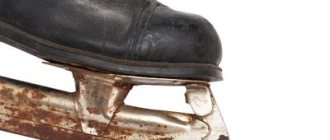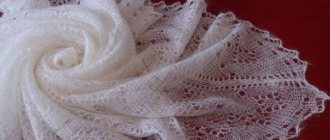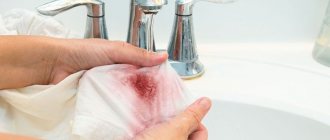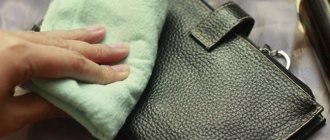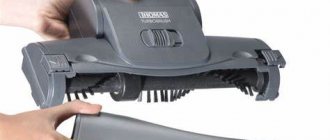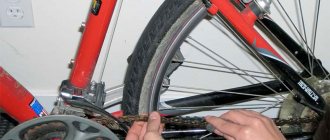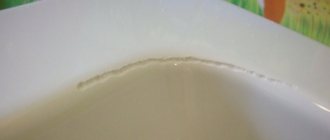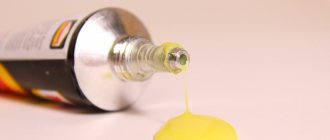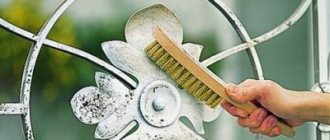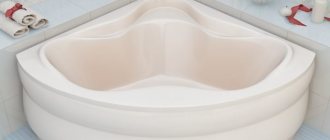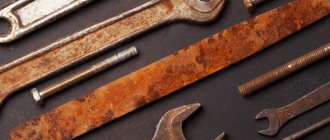Silver cleaning
Place the silverware in a saucepan and fill it with a liquid made up of equal parts vinegar and milk. Leave overnight, then wash in hot water and soap and wipe dry.
Silver can be polished by placing the silver item in boiling water with strips of foil, adding 1 teaspoon each of baking soda and salt.
If you don't have much silver, you can use white toothpaste.
For large surfaces, use a paste of baking soda and water and a clean, soft cloth. Apply the paste to the surface, rub in using a washcloth, rinse with hot water and polish with a clean, soft cloth. For particularly severe cases, leave the paste on for about an hour.
Warning: If you clean silver with rubber gloves, it will tarnish. Use plastic or cotton gloves.
To clean jewelry made of precious metals with precious stones, also take an old toothbrush and regular white toothpaste (it is better to use toothpaste rather than gel - toothpaste is cheaper and has better abrasive properties).
Professional metal cleaning products
Caring for metal accessories will become easier and more effective if you purchase a universal cleaner for metal surfaces. Metal Cleaner from the Israeli brand Bagi is a concentrated solution that carefully removes dirt from all types of precious and non-ferrous metals.
You no longer have to select a cleaning method for each item - Metal Cleaner is equally effective for removing plaque, darkening and oxides from gold, silver, copper, brass, stainless steel and other alloys. The unique composition of the product without abrasive particles after the first use returns the surface to its original shine without leaving scratches. The solution keeps the decorative blackening intact, only delicately removing traces of oxide and accumulated dirt. A completely safe product does not harm human health and is suitable for cleaning tableware and serving items.
Cleaning copper items
Tarnished copper can be cleaned and polished by boiling copper items in water with 1 teaspoon salt and 1 cup vinegar.
Cleaning copper objects is carried out as follows: objects made of polished copper are first wiped with a soft rag soaked in kerosene, and then cleaned with chalk powder with a woolen rag.
Heavily neglected copper objects can be restored to shine by wiping the object with a rag soaked in diluted hydrochloric acid.
Then, clean as indicated above, or dissolve 30 g of oxalic acid in 1 liter of water, add 4 tablespoons of alcohol and 3 tablespoons of turpentine.
After this, the liquid is shaken well and poured into bottles for storage.
When used, the item to be cleaned is lightly wiped with this liquid, and then wiped with a dry linen rag: the copper quickly cleans and becomes shiny.
Also, to clean copper products, mix cream of tartar (the potassium salt of tartaric acid, formed during the fermentation of grape juice) with lemon juice.
Apply the resulting paste to the copper surface for five minutes, then rinse with warm water and wipe.
We draw your attention to the fact that by using natural detergents instead of chemical ones, you will not only save a lot of money, but also save a large part of Nature, which is dying because of us; you will not become the culprit of poisoning the people and animals living with you, and you will also make your contribution against the criminal policy of chemicalization of everything and everyone, to please the insatiable chemical concerns
How to clean the surface?
To achieve a good result, rust removal must combine an integrated approach: mechanical and chemical action.
Just cleaning off the rusty layer is not enough. Chemical exposure prevents the spread of corrosive processes.
In addition, electrochemical effects can be used by passing an electric current through a special solution. This method is used more often in industrial settings, but can also be organized at home, despite the complexity of the organization.
You will find all the most useful and important information about rust removal methods and techniques in this section.
Acids
Let's look at what acids remove rust:
Lemon
Citric acid is a harmless product that will help deal with rust stains on metal, as well as on tiles and other surfaces.
At the preparation stage for cleaning, the acid is diluted with water, preparing a concentrated solution, and applied to the affected areas .
After the composition has been applied for an hour, the acid is washed off with a washcloth. This option is suitable for light stains, but will not cope with serious ones.
Read more about the use of citric acid in the fight against rust here.
Sorrel
Oxalic acid is a chemical substance that exhibits corrosion activity. This drug is effective, but poisonous. Its use must be carried out with high-quality protection, including safety glasses and a respirator. Can be used for advanced cases.
Work order:
- wash the area that needs treatment with a detergent; even laundry soap will do;
- dry the metal;
- Combine 0.3 liters in a separate container. water and 6 tsp. acid powder;
- apply the product with a brush;
- ensure contact of the solution with the metal for 40 minutes;
- clean with a brush;
- rinse under water.
If possible, it is better to clean metal items by immersion in the prepared solution.
Solyanaya
You can remove rust from metal using hydrochloric acid. This method gives a good effect, allowing you to cope with even advanced cases of corrosion.
Work order:
- With a rag soaked in acid, rub the surface with areas of corrosion using polishing, rubbing movements.
- Leave for half an hour.
- Wash off with plenty of water.
You need to wash off the acid especially carefully so that it does not remain on the metal at all, since it can damage the skin of your hands, even in low concentrations. It is necessary to take into account the toxicity of the drug and pay attention to personal protection.
Orthophosphoric
Phosphoric acid is one of the most effective substances for removing corrosion on metal. Due to its ability to react with corrosion products, this drug can cope with even significant damage.
To clean the metal, an acid of 15-20% concentration is used. The time required for exposure is about 5 minutes. After this, the remaining rust is cleaned off with a stiff brush.
Phosphoric acid is included in most rust converters. This article will tell you about the use of phosphoric acid against rust.
Vinegar
Removing rust using vinegar is a simple method that does not require significant investment. But this method will give a good effect only with unstable contamination in domestic conditions, for example, on plumbing.
The best results will be if the rusted metal objects are small and can be completely dipped in vinegar. This method is convenient for bringing bolts, nuts, etc. into proper shape.
It is recommended to use vinegar undiluted. Read more about the cleaning method here.
Soda
Baking soda is an affordable product for combating rusty plaque at home.
To prepare the cleaning composition, you need to make a non-liquid mixture, the consistency of which is like gruel.
Operating procedure:
- Using a sponge, apply the composition to the area of contamination using rubbing movements.
- The mixture is left to act for half an hour.
- Rub the metal again with a sponge or brush.
- Rinse off.
Hydrogen peroxide
Peroxide is a cheap pharmaceutical product used to disinfect wounds. In addition, this drug is actively used to remove dirt from various surfaces, and also helps to cope with rust.
You can use peroxide as a stand-alone product or in combination with sodium salt, which can increase the effect.
Procedure:
- pour 4 tbsp into the prepared container. trisodium phosphate;
- pour in 3 liters of water;
- pour in 50 ml of peroxide very slowly, in small portions;
- Dip rusted tools or other metal objects into the container;
- leave the metal in the solution for half an hour;
- wash off the composition with water.
For large objects, active rubbing of the metal surface with a solution is acceptable. Periodically, several times, every 10 minutes, repeat rubbing.
It is convenient to use peroxide to combat corrosion if it is present in small quantities , for example, on kitchen utensils.
Aluminium foil
Aluminum foil, which is used in the kitchen during food preparation, can be used for an abrasive effect.
To do this you need:
- Cut off a small piece of foil.
- Form this piece into a ball.
- Use this ball to treat rust stains using rubbing movements.
This method can be used to treat small stains, but it is not suitable for eliminating serious corrosion damage. Treatment with foil gives an unstable result.
This method is suitable as a temporary measure , if necessary, to eliminate local traces of rust, for example, on an iron.
After using only aluminum foil without the use of additional products, the result will not last long - no more than a few months.
Cola
Using Coca-Cola for corrosion is a popular cleaning recipe . In order to get a noticeable result, it is necessary to ensure contact of the cola with the metal surface.
If you need to process metal that is fixed at an angle or vertically, you can soak a rag with it and apply it to the desired areas.
Depending on the extent of the corrosion processes, exposure should last from several hours to a day. After this, the surface is brushed and washed off with water.
The effectiveness of the recipe is due to the phosphoric acid contained in cola. Read more about this method of cleaning surfaces from rust in this article.
Battery
Even a regular battery can be used to remove rust. To carry out the work, you need to prepare tools and consumables.
You will need:
salt batteries with a zinc body;- rubber gloves;
- blade;
- insulating tape (or rubber band);
- baking soda;
- the wire;
- sponges;
- car battery;
- electric clothespin (optional);
- orthophosphoric acid.
You can check that the battery is a salt battery with a zinc case using a magnet - it should not be magnetized.
Work order:
- Use a razor blade to remove the wrapping from the battery.
- Wind the wire around the body, securing it with electrical tape.
- Attach the sponge with electrical tape to the end marked “-”.
- Remove rust from the metal that will be processed.
- Soak the sponge in phosphoric acid.
- The battery wire is connected to the “+” side of the car battery. This can be done conveniently using an electric clothespin.
- Burning off rust is carried out by pressing the end part of the battery, which has a cotton pad on it. Hissing and the appearance of foam should indicate that the process is proceeding correctly.
- During the processing process, the cotton swab burns out and must be replaced. If a large area of metal is to be processed, then the battery will also have to be changed.
During the processing process, you cannot linger in one place. It is necessary to drive over the source of corrosion, ensuring the removal of rust and the transfer of zinc to the surface.
After galvanizing, the acid must be removed. Soda is used for this. A concentrated aqueous solution is prepared from it, which is used to wipe the surface.
After this treatment, the metal will be protected and will not rot. Even if significant damage has already been caused by corrosion, further spread of the process will be stopped .
You can learn more about this rust removal method from this article.
Cleaning drainage pipes
First, try cleaning the pipes with a plunger. In general, you can clear the blockage by pouring half a cup of baking soda into the drain hole and adding half a cup of vinegar. In this case, the hole itself must be closed with something for a while. Fatty acids will begin to decompose into soap and glycerin, and the clogged pipe will be easily cleared. Just don't use this method after you've already poured some commercial drain cleaner down your drain, as the reaction between the cleaner and the vinegar will release extremely dangerous gases.
Causes of darkening
Costume jewelry is made from an alloy of metals that are susceptible to oxidation when interacting with other substances. When in contact with skin, water (especially chlorinated, sea water), or exposure to air, jewelry gradually darkens, loses its shine and brightness.
Costume jewelry can darken from household chemicals, perfumes, and frequent contact with other objects. It is important to regularly clean products, including stones, which also become dull and scratched. It is better to remove jewelry before cleaning and contact with water.
What is rust?
The corrosion process itself is the spontaneous destruction of metal elements under the influence of oxygen. At the chemical level, we obtain the reduction of oxygen, which is why a layer of rust appears on the metals.
There is a fairly broad classification of corrosion according to the conditions of occurrence, nature and a number of additional effects, but in rolled metal we are interested in only some of them.
Please note: not only metal products undergo the aging process. The term “aging/fatigue” is also inherent in plastics, rubber, concrete + other types of materials that are used in industry and everyday life.
The reasons for such processes are quite natural - a decrease in operational characteristics due to the physics + chemistry of the environment. Non-ferrous metals are less susceptible to corrosion, however, “aging” cannot be completely eliminated. An oxide film can slow down the formation of rust, but it is extremely difficult for widely used building materials to completely avoid the process.
I will explain the types of rust in the household aspect with a separate table.
| Type | Description |
| Yellow | Divalent ferum oxide. It manifests itself in environments with high humidity and lack of oxygen. This type of rust is often found in water. |
| Brown | Occurs without water. It is extremely rare in everyday life and industry, so I will not focus on it. |
| Black | A special type of rust that occurs in an environment with little access to oxygen and completely without moisture. A ferromagnetic oxide having a stable structure and a slow rate of propagation over the metal surface. |
| Red | The most common type of rust that forms in an environment with oxygen and medium to high humidity. The danger of red rust is iron hydroxide, which causes the metal to peel off until it completely decomposes. |
In addition to classification by type, there is a distribution of corrosion depending on the degree of distribution - uniform, local and intercrystalline. The latter poses the greatest danger to metal structures.
Several types of rust can easily coexist on one piece of metal. In our country, iron is considered the most vulnerable to corrosion, and given the widespread use of alloys based on this chemical element, we can encounter rust everywhere.
How to remove rust 10 ways | Blog Comfy
- Take the rusty item and clean it with detergent.
- Wait for the moisture to dry completely.
- Add six teaspoons of oxalic acid to a glass of water.
- Immerse the item in the solution for 30-40 minutes.
- Remove any remaining rust with a washcloth.
When folk remedies and chemistry do not help, try scraping rust off a metal surface. Choose this method if the affected object is large and easily accessible. For example, scraping rust off bicycle spokes is a thankless task.
Control of the cleaned metal surface
Methods for monitoring a cleaned surface before painting are regulated by ISO 8502 .
- ISO 8502-1 specifies a method for detecting soluble corrosion products on a cleaned surface using an indicator tape.
- ISO 8502-2 specifies a method for the laboratory analysis of chlorides in water collected after rinsing a cleaned surface measuring 250 x 100 mm.
- ISO 8502-3 specifies a method for assessing surface dust control using adhesive tape. Surface dustiness is assessed in points according to the figure.
- ISO 8502-4 establishes a methodology for assessing the likelihood of moisture condensation on a cleaned surface.
- ISO 8502-5 specifies a method for the determination of chlorides using an indicator tube.
- ISO 8502-6 provides the Brestle method for the selection of soluble contaminants from a cleaned surface.
How to remove rust before painting at home?
These methods are suitable if the rust has not yet eaten into the metal, and the part itself does not perform any important tasks.
White vinegar . The damaged part is immersed in vinegar for several hours, after which the loose rust is removed mechanically. If the object is large, then vinegar is simply poured onto the surface. You can use foil, dip it in vinegar and use it instead of a steel brush. In some recipes, white vinegar is mixed with salt (in the proportion of 1 tablespoon per 300 ml of vinegar) and flour, the damaged areas are treated with the product, then washed off.
Baking soda. It can be diluted with water to the consistency of liquid sour cream so that the composition can be applied to the surface. In this case, clean the rust with a toothbrush, then rinse the surface.
Salt. It is necessary to thoroughly sprinkle the damaged surface with salt, then squeeze as much lime or lemon juice onto it as possible. All you have to do is wait 2-3 hours, and then clean the surface with a brush.
Diesel fuel. It can also deal with rust. You can take 1 liter of diesel fuel and put rusted parts in it for a day. The rust can then be cleaned off with a brush.
Fish fat. It can dissolve rust if applied to the damage and left for a couple of hours. In addition, this product will create a protective film on the metal.
How I found my ideal hair growth product
Hello dear! I want to share with you my solution to the sensitive problem of hair loss . The problems are very serious, at least for me. I would never have thought that this misfortune would touch me, especially at the age of 29 (read more...)
Lemon acid. You can fill it with warm water into a container and put the damaged part there. The formation of bubbles will tell you that the process has begun. Leave the item for 8-10 hours, then rinse and dry.
Methods for cleaning coins from blackness
Patina is a kind of coating that forms on copper coins after prolonged contact with air. There are several ways to remove blackness, and we’ll look at them.
1. Prepare a highly concentrated solution from soap shavings and warm it up a little. Dampen cosmetic sponges and rub the exhibits.
2. You can also clean it with ammonia. Wear gloves, place the products on your palm and wipe with a disk soaked in ammonia.
3. If the blackness is so strong that nothing helps, act differently. Combine turpentine, water, rubbing alcohol and oxalic acid. Wipe the exhibits with a dampened cotton wool until they shine.
Criteria for choosing a cleaning product
In order to choose a tool that will cope with the task at hand, the following criteria must be met:
- the speed at which the cleaning agent affects the problem. Preference should be given to products that cleanse stains in a few minutes;
- the substance should not leave greasy and sticky stains on the product;
- the packaging must be marked as free of toxic substances;
- the smell should not be pungent;
- the product should be of moderate thickness and have a dispenser for compact spraying.
It is also necessary to ensure that the composition contains special components that protect your hands from negative effects.
How to remove rust from a toilet
Rust tends to penetrate deep into the enamel, giving the toilet a disgusting appearance and creating an unpleasant odor in the room. The reasons for its appearance may be improper care of the toilet or hard water.
The most incredible way to get my hair back!
This is just a DISASTER ! And after all, my hair did not start falling out in one day, but systematically - day after day I watched how the hair left my head: while combing, washing, even while sleeping. (read more…)
In the fight against rust, simple soda can cope, and without causing harm when cleaning the enamel and human health. The following method is used quite often:
- Heat a glass of 70% vinegar essence to a temperature of 45 degrees, add 1 tablespoon of soda to it.
- Apply the prepared product to the damaged areas of the toilet for 10-12 hours, then rinse off.
- If necessary, repeat the procedure until the rust is completely eliminated.
- Or pour half a glass of soda into the toilet, pour vinegar on top, and leave for 20-30 minutes. After the time has passed, clean it with a brush.
If you don’t have vinegar essence, you can use 9% vinegar, but you will also need to add a few drops of iodine.
How to properly grind metal with a grinder?
Grinding metals with a grinder is usually performed with standard metal grinding wheels. They have different diameters, different thicknesses and different grains of the grinding surface. But, if you are going to sand an indecently rusted surface, then first you need to go over it with a metal brush.
Interesting materials:
How to calculate the actual value of a share when a participant leaves an LLC? How to calculate maternity leave for child care? How to calculate child benefits under 18 years of age? How to calculate income and expenses? How to calculate the dose of eutirox by weight? How to calculate the dose of short-acting insulin? How to calculate the cadastral value of real estate? How to calculate the capitalization ratio on the balance sheet? How to calculate profit ratio? How to calculate the amount of insulin?
Anti-corrosion agents
- Wash the rusty item with detergent.
- Wait until completely dry.
- Mix 300 ml of water with 6 teaspoons of oxalic acid.
- Immerse the part in the resulting solution for 30-40 minutes.
- Use a brush or washcloth.
This is the most effective way to combat an unaesthetic phenomenon. Start cleaning as quickly as possible if you see yellow spots on the surface. It doesn’t matter which product you choose for the first time. The main thing is to do this as early as possible.
Wire brush
- Paint chips. The surface of many metal structures is covered with a protective layer of paint, which prevents moisture from contacting the iron. However, over time, the paint begins to peel off the product, which leads to corrosion.
- Scratches. Rusting of iron is facilitated by deep cracks on the surface.
- No anti-corrosion treatment. Experts advise treating metal with special anti-corrosion agents. If this is not done, the iron will gradually begin to become covered with a rusty coating.
Quite often, metal products become rusty. This occurs when the metal comes into contact with moisture or as a result of mechanical damage.
Folk remedies Recipes for masks At home Hair loss in women How to stimulate growth Causes of hair loss Hair loss in men Review of vitamins Helpful tips
